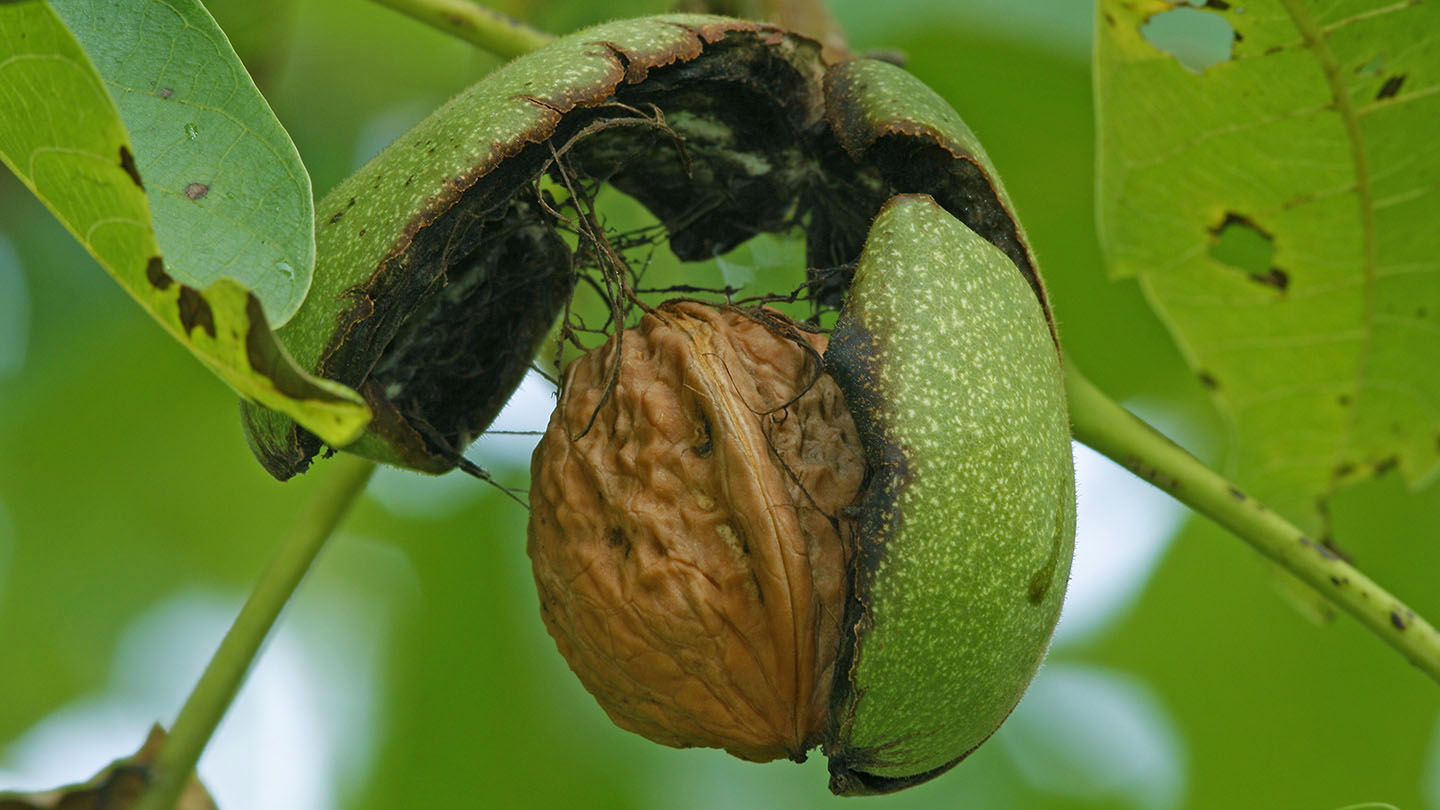Home>Gardening News and Trends>Latest News>What Do Phylogenetic Trees Represent


Latest News
What Do Phylogenetic Trees Represent
Published: November 12, 2023
Discover the latest news on phylogenetic trees and what they represent. Stay updated with the most recent developments in this field.
(Many of the links in this article redirect to a specific reviewed product. Your purchase of these products through affiliate links helps to generate commission for Chicagolandgardening.com, at no extra cost. Learn more)
Table of Contents
Introduction
Phylogenetic trees play a crucial role in the field of biology, helping scientists understand the relationships and evolutionary history of different species. These trees visually represent the connections between organisms, showcasing their shared ancestry and divergence over time. By analyzing the structure and patterns of these trees, researchers can gain insights into how life has evolved and diversified on our planet.
At its core, a phylogenetic tree is a diagrammatic representation of the evolutionary relationships among organisms. It acts as a roadmap, illustrating how species are connected through a series of branching patterns that depict common ancestors and the emergence of new lineages. These trees are pivotal for studying and understanding the vast diversity of life on Earth.
Phylogenetic trees are constructed based on a combination of data, including morphological characteristics, genetic information, and even fossil records. By analyzing these datasets, scientists can infer the most likely relationships between species and construct a tree that represents the evolutionary history of the organisms under investigation.
One of the fundamental aspects of phylogenetic trees is their hierarchical structure. Each branch on the tree represents a specific lineage or group of organisms, with shared ancestry occurring at the nodes where branches meet. The length of the branches can indicate the degree of genetic divergence that has occurred over time, with longer branches representing greater genetic differences between species.
Phylogenetic trees also utilize various terminologies and symbols that help convey information about the relationships and characteristics of the organisms being studied. For example, a clade represents a group of organisms that share a common ancestor, while a sister group indicates the closest relatives to a specific lineage. These terminologies aid in clarifying the relationships and evolutionary connections represented in the tree.
In the following sections, we will explore the intricacies of phylogenetic trees, their construction methods, and their applications in various areas of biology. Additionally, we will discuss the limitations and challenges associated with interpreting and constructing phylogenetic trees.
Definition of Phylogenetic Trees
A phylogenetic tree, also known as an evolutionary tree or a cladogram, is a visual representation of the evolutionary relationships among different species or groups of organisms. It depicts the branching patterns that illustrate common ancestry and the diversification of life forms over time. These trees provide a framework for understanding the evolutionary history and relatedness of organisms.
A phylogenetic tree is constructed using various types of data, including morphological characteristics, genetic sequences, and even fossil records. By analyzing these data, scientists can infer the most likely relationships between species and construct a tree that accurately represents the evolutionary history of the organisms being studied.
The core concept of a phylogenetic tree is the idea of a common ancestor. Each branch on the tree represents a specific lineage or group of organisms, with the points where branches meet representing the common ancestors of the organisms. These points are known as nodes or branching points.
The branches on the tree can vary in length, indicating the amount of evolutionary change that has occurred over time. Longer branches represent greater genetic divergence, whereas shorter branches indicate closer genetic relatedness. The length of the branches can be influenced by factors such as the rate of mutation, natural selection, and other evolutionary processes.
Phylogenetic trees also incorporate several terminologies and symbols to convey information about the relationships between organisms. Clades, for example, represent groups of organisms that share a common ancestor. Nodes that connect different clades indicate points of divergence and the emergence of new lineages. Sister groups are defined as the closest relatives to a particular lineage.
Phylogenetic trees can be depicted in various formats, including rooted and unrooted trees. Rooted trees have a single ancestral node, representing the common ancestor of all the organisms depicted on the tree. Unrooted trees, on the other hand, do not have a designated ancestral node, allowing for the exploration of alternative relationships between different groups of organisms.
In summary, a phylogenetic tree is a visual representation of the evolutionary relationships between species or groups of organisms. These trees are constructed based on data from various sources and provide valuable insights into the evolutionary history and relatedness of different organisms. Understanding the structure and terminologies associated with phylogenetic trees is crucial for interpreting and analyzing the vast diversity of life on our planet.
Tree Structure and Terminologies
Phylogenetic trees possess a distinct structure consisting of branches and nodes, which is crucial for understanding the relationships and evolutionary history of organisms. Additionally, these trees incorporate specific terminologies and symbols to convey important information. Let’s explore the structure and terminologies commonly used in phylogenetic trees.
The main components of a phylogenetic tree are the branches and nodes. The branches represent lineages or groups of organisms, and they diverge from a common ancestral node. Each branch represents a specific point in evolutionary history where new lineages or species have emerged.
The point where two branches meet indicates a node, which represents a common ancestor shared by the organisms that branch out from it. Nodes are crucial for understanding the evolutionary relationships between different groups of organisms.
One important concept in phylogenetic trees is the concept of clades. A clade is a group of organisms that consists of a common ancestor and all of its descendants. Clades show the evolutionary relationships within a tree, highlighting the evolutionary history among different organisms.
In addition to clades, there are sister groups which are the closest relatives to a specific lineage. Sister groups share a common ancestor and are considered to be the most closely related groups in the tree.
The length of the branches in a phylogenetic tree can convey important information about genetic divergence and evolutionary change. Longer branches indicate greater genetic differences between species, suggesting a larger amount of evolutionary change over time. On the other hand, shorter branches signify closer genetic relatedness.
It’s also important to mention the concept of rooting in phylogenetic trees. A rooted tree has a single ancestral node, also known as the root, which represents the common ancestor of all organisms depicted on the tree. Rooting the tree helps to establish a temporal framework and understand the evolutionary direction of different lineages.
Terminologies and symbols also play a significant role in phylogenetic trees. These include labels for species or groups of organisms, indicating their placement on the branches of the tree. Dots or circles may be used to represent extinct or hypothetical ancestor species.
With a good understanding of the structure and terminologies used in phylogenetic trees, researchers can navigate and interpret the tree to decipher the evolutionary relationships, relatedness, and historical connections between different organisms.
Representation of Relationships
Phylogenetic trees provide a visual representation of the relationships between different species or groups of organisms. These trees showcase the shared ancestry and evolutionary divergence among organisms, helping scientists understand the evolutionary history and relatedness of life forms on Earth.
The relationships between organisms are depicted through the branching patterns in a phylogenetic tree. The branches represent lineages or groups of organisms, while the nodes indicate common ancestors from which these lineages have diverged. The structure of the tree helps to illustrate the evolutionary connections and historical relationships between different organisms.
The length of the branches in the tree can convey information about the degree of genetic divergence that has occurred. Longer branches indicate greater genetic differences between species, suggesting a larger amount of evolutionary change over time. Conversely, shorter branches signify closer genetic relatedness, indicating recent divergence or similarity.
Phylogenetic trees also depict the concept of clades, which represent groups of organisms that share a common ancestor and all of its descendants. Clades highlight the relationships between different taxa and provide insights into their evolutionary history. By analyzing the branching patterns and clades in a phylogenetic tree, scientists can identify the evolutionary relationships between species and understand the evolutionary processes that led to their diversification.
Sister groups are another important aspect of phylogenetic trees and represent the closest relatives to a specific lineage. These groups share a recent common ancestor and provide valuable information about the evolutionary connections between different lineages.
It is worth mentioning that the representation of relationships in a phylogenetic tree is based on the available data and the methods used for constructing the tree. Different datasets and analysis methods may lead to variations in the depiction of relationships within the tree. However, these variations are essential for scientific exploration and understanding of the complexities within the tree of life.
Overall, phylogenetic trees serve as powerful tools for representing and understanding the relationships between organisms. They provide a visual framework for studying the evolutionary history and relatedness of life forms, allowing scientists to unravel the mysteries of how life has diversified and evolved on our planet.
Evolutionary History
The study of evolutionary history is a fundamental aspect of biology, and phylogenetic trees serve as valuable tools for deciphering and understanding the complex patterns of life’s evolution. These trees provide insights into the evolutionary relationships and historical connections between different species, offering a glimpse into the vast tapestry of life on Earth.
Phylogenetic trees enable scientists to reconstruct the course of evolution by analyzing the shared characteristics, genetic information, and fossil records of organisms. By examining these data, researchers can infer the relationships and connections between species, uncovering the ancient lineages and common ancestors that have shaped the diversity of life.
One of the key elements of phylogenetic trees is the concept of common ancestry. The branching patterns in the tree represent the divergence of lineages from their shared ancestral nodes. By tracing the branches back in time, scientists can uncover the evolutionary history of species and the points at which different taxa diverged from a common ancestor.
Through the analysis of morphological characteristics and genetic data, researchers can reconstruct the evolutionary trajectories of various lineages. This reconstruction allows them to understand how species have evolved and adapted to their environments over time. By comparing the similarities and differences between different organisms, scientists can discern patterns of evolutionary change and infer the selective pressures that have shaped their traits.
Phylogenetic trees also shed light on the processes that drive evolutionary innovations and the emergence of novel characteristics. By examining the branching patterns and the timing of evolutionary events, scientists can infer the sequence of evolutionary changes that have given rise to diverse forms of life.
Furthermore, phylogenetic trees provide a framework for understanding the co-evolution of organisms and the intricate web of ecological relationships that exist in ecosystems. By analyzing the relationships between different species represented in the tree, scientists can uncover the evolutionary dynamics that have shaped the interactions between organisms, such as predator-prey relationships, mutualistic symbioses, or co-evolutionary arms races.
Understanding the evolutionary history of species is not only intellectually intriguing but also has practical implications. Knowledge of evolutionary relationships can inform conservation efforts, as it helps prioritize the protection of species that are most genetically distinct or have unique evolutionary histories. Moreover, studying the evolutionary history of pathogens can aid in the development of effective strategies for disease prevention and management.
In summary, phylogenetic trees provide a powerful tool for unraveling the evolutionary history of life on Earth. By tracing the relationships and connections between different species, these trees offer insights into the processes that have driven the diversification and adaptation of organisms over millions of years. Understanding evolutionary history is fundamental to our understanding of the ecological interactions, biodiversity, and dynamics of life on our planet.
Common Methods for Constructing Phylogenetic Trees
The construction of phylogenetic trees is a complex process that involves analyzing a variety of data to infer the evolutionary relationships between different species. Over the years, several methods have been developed to construct these trees, each with its own strengths and limitations. Here, we explore some of the most common methods used for constructing phylogenetic trees.
1. Morphological Characters: One of the earliest methods for constructing phylogenetic trees is based on the analysis of morphological characters, such as physical traits or anatomical features. By comparing the presence or absence of these characters among different species, researchers can infer their evolutionary relationships. This method is particularly useful when DNA or genetic information is not available.
2. DNA Sequencing: With advancements in DNA sequencing technology, analyzing genetic sequences has become a powerful tool for constructing phylogenetic trees. DNA sequencing allows scientists to compare the genetic similarities and differences between species, providing valuable insights into their evolutionary relationships. Various genetic markers, such as genes or regions of the genome, can be used for this purpose.
3. Molecular Clock: The molecular clock hypothesis assumes that molecular changes accumulate in a species at a relatively constant rate over time. By comparing the DNA or protein sequences of different species, scientists can estimate the divergence times between lineages and construct phylogenetic trees with an explicit time scale. This method is particularly useful for studying the evolutionary history of organisms when there is limited fossil evidence.
4. Phylogenomics: Phylogenomics combines the power of genomics with phylogenetics. It involves sequencing the entire genomes or a large number of genes from multiple species to construct phylogenetic trees. By analyzing a vast amount of genetic data, researchers can obtain a more comprehensive and robust understanding of the evolutionary relationships between organisms.
5. Maximum Likelihood and Bayesian Inference: Maximum likelihood (ML) and Bayesian inference (BI) are statistical methods used to estimate the most likely tree topology and branch lengths based on the data and a given model of evolution. These methods account for the uncertainty in the data and provide a quantitative measure of confidence for the inferred relationships in the phylogenetic tree.
6. Hybrid Approaches: In some cases, a hybrid approach is used, combining multiple data types. For example, the combination of morphological and molecular data can provide a more complete picture of the evolutionary relationships between species. These hybrid approaches help address potential limitations or biases associated with individual data types.
It’s important to note that constructing phylogenetic trees is an iterative process, often involving multiple rounds of analysis and refinement. Researchers continuously evaluate and assess the quality of the tree by considering factors such as statistical support, data quality, and biological realism.
In summary, the construction of phylogenetic trees involves the analysis of various data types, including morphological characteristics, DNA sequences, and molecular clocks. The choice of method depends on the available data, the research question, and the underlying assumptions. By using innovative approaches and incorporating advancements in technology, scientists continue to expand our understanding of the evolutionary relationships and history of life on Earth.
Applications of Phylogenetic Trees
Phylogenetic trees have a wide range of applications in various fields of biology and beyond. These trees serve as powerful tools for understanding the evolutionary relationships between organisms and provide insights into their biological characteristics, ecological interactions, and even human health. Let’s explore some key applications of phylogenetic trees.
1. Understanding Biodiversity and Species Classification: Phylogenetic trees help researchers understand the diversity of life on Earth by providing a visual representation of the relationships between different species. These trees assist in identifying and classifying new species, determining their evolutionary history, and unraveling their place within the larger tree of life.
2. Conservation Biology: Phylogenetic trees play a crucial role in conservation biology. Knowing the evolutionary relationships between species allows researchers to prioritize conservation efforts based on genetic distinctiveness and evolutionary uniqueness. Phylogenetic trees help identify endangered or threatened species that possess unique genetic lineages and are therefore of utmost importance for preservation.
3. Comparative Genomics and Functional Genomics: Phylogenetic trees are instrumental in understanding the genomic basis of biological traits and functions. Comparative genomics involves the study of genetic similarities and differences between species to identify genes responsible for specific traits. Phylogenetic trees provide the evolutionary context necessary for interpreting genomic data and studying the evolution of genes and their functions.
4. Evolutionary Medicine: Phylogenetic trees have applications in the field of human health and medicine. By comparing the genetic sequences of different pathogens, such as viruses or bacteria, researchers can reconstruct their evolutionary history and understand how they have evolved and spread over time. This knowledge is crucial for developing effective treatment strategies and designing vaccines.
5. Ecology and Biogeography: Phylogenetic trees contribute to the understanding of ecological interactions and the distribution of species across different geographic regions. By mapping the evolutionary relationships onto geographical maps, researchers can study how evolution has shaped the distribution of organisms and how environmental factors have influenced their diversification and adaptation.
6. Understanding Evolutionary Processes: Phylogenetic trees help scientists study evolutionary processes and mechanisms, such as speciation, adaptive radiation, and convergent evolution. By analyzing the patterns of branching and divergence in a phylogenetic tree, researchers can gain insights into the factors shaping evolutionary change and the forces driving the diversification of life forms.
7. Education and Outreach: Phylogenetic trees are not only valuable tools for researchers but also for educational purposes. They help students and the general public visualize and understand the complex interconnectedness of life on Earth. Phylogenetic trees can foster an appreciation for biodiversity and the importance of conservation while promoting scientific literacy.
These are just a few examples of the diverse applications of phylogenetic trees. As our understanding of evolution and its underlying processes continues to advance, phylogenetic trees will undoubtedly play an increasingly significant role in shedding light on the intricate web of life on our planet.
Limitations and Challenges
While phylogenetic trees are powerful tools for studying evolutionary relationships, they also have limitations and challenges that researchers must be aware of. It’s important to consider these limitations and challenges to ensure the accuracy and reliability of phylogenetic tree reconstructions.
1. Incomplete Data: One of the main challenges in constructing phylogenetic trees is the availability of complete and accurate data. The absence of certain data points, such as missing genetic sequences or incomplete fossil records, can lead to uncertainties in the accuracy of the tree. In addition, biases in sampling methods or the use of insufficient taxa can affect the representation of relationships in the tree.
2. Homoplasy and Convergent Evolution: Homoplasy refers to the occurrence of similar traits in different species that do not arise from a common ancestor. Convergent evolution, where organisms independently evolve similar traits under similar environmental pressures, can lead to misleading results in phylogenetic tree reconstructions. Such cases of convergent evolution can confound the accurate identification of shared ancestry based on shared traits alone.
3. Model Assumptions and Simplifications: Phylogenetic tree reconstructions rely on various assumptions and simplifications. These assumptions include a constant rate of evolutionary change, tree topology, and the absence of lateral gene transfer. Deviations from these assumptions can lead to inaccuracies in the inferred relationships between species and introduce bias into the analysis.
4. Long Branch Attraction: Long branch attraction refers to a phenomenon where long branches in the tree appear to be more closely related than they actually are. This can occur when fast-evolving lineages or high rates of evolution cause genetic similarities to converge, resulting in misleading placements of taxa in the tree. Long branch attraction can particularly affect the accuracy of deep evolutionary splits.
5. Choice of Method and Analysis: Different methods for constructing phylogenetic trees can yield different results. The choice of method, such as maximum likelihood or Bayesian inference, can impact the inferred relationships and tree topology. Likewise, the choice of genetic markers or morphological characters, as well as variations in the parameters and models used in the analysis, can introduce biases and affect the accuracy of the tree.
6. Interpretation and Reticulate Evolution: Phylogenetic trees are representations of evolutionary history, and interpretation of the tree is subject to researcher interpretation. A challenge arises when reticulate evolution, such as horizontal gene transfer, hybridization, or gene duplication, occurs. Such events can complicate the tree structure and require additional analytical approaches to accurately represent the relationships between organisms.
7. Complexity of Evolutionary Processes: Evolutionary processes are complex, multilayered, and influenced by various factors. Identifying and disentangling the different evolutionary processes, such as speciation, gene flow, and adaptation, can be challenging. Phylogenetic trees provide a simplified representation of these processes, but the true complexity of evolution may not be fully captured.
Despite these challenges and limitations, researchers continually strive to refine and improve the accuracy of phylogenetic tree reconstructions. Incorporating more comprehensive data, refining analytical methods, and addressing the assumptions and limitations of the models used will help advance our understanding of the evolutionary relationships among species and the complex patterns of life’s diversification.
Conclusion
Phylogenetic trees are invaluable tools in the field of biology, offering insights into the evolutionary relationships and history of different species. These tree-like structures represent the interconnectedness of life on Earth, illustrating the shared ancestry and diversification of organisms over time. By analyzing morphological, genetic, and other data, scientists construct phylogenetic trees to gain a deeper understanding of the evolutionary processes that have shaped the biodiversity we observe today.
The construction of phylogenetic trees involves navigating through challenges and limitations. Incomplete data, homoplasy, and the assumption of certain models can introduce uncertainties and biases into the tree reconstruction process. The interpretation of phylogenetic trees also requires careful consideration of reticulate evolution and the complexities of evolutionary processes.
However, despite these challenges, phylogenetic trees play a crucial role in numerous applications. They aid in understanding biodiversity, conservation planning, and species classification. Phylogenetic trees have practical applications in fields such as comparative genomics, evolutionary medicine, and ecology, providing a framework for unraveling the genetic basis of biological traits and the patterns of ecological interactions.
As technology improves and new datasets become available, researchers continue to refine the methods used for constructing phylogenetic trees, addressing limitations and incorporating more comprehensive data. Advances in computational analysis and genomic sequencing contribute to the accuracy and robustness of phylogenetic tree reconstructions.
Phylogenetic trees not only serve as important tools for advancing scientific knowledge but also play a key role in education and outreach. They help in promoting scientific literacy and fostering an appreciation for the intricacy and interconnectedness of life forms on Earth.
In conclusion, phylogenetic trees provide a window into the evolutionary history of life. They help us understand the relationships between different species, unravel the mechanisms behind evolutionary change, and contribute to various fields of study. By continually refining methods and incorporating new data, phylogenetic trees will continue to be indispensable in our quest to explore and comprehend the diversity and interconnectedness of life’s history.







